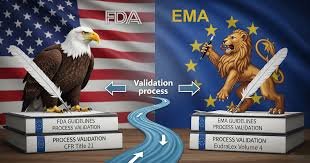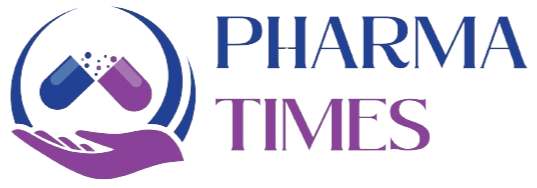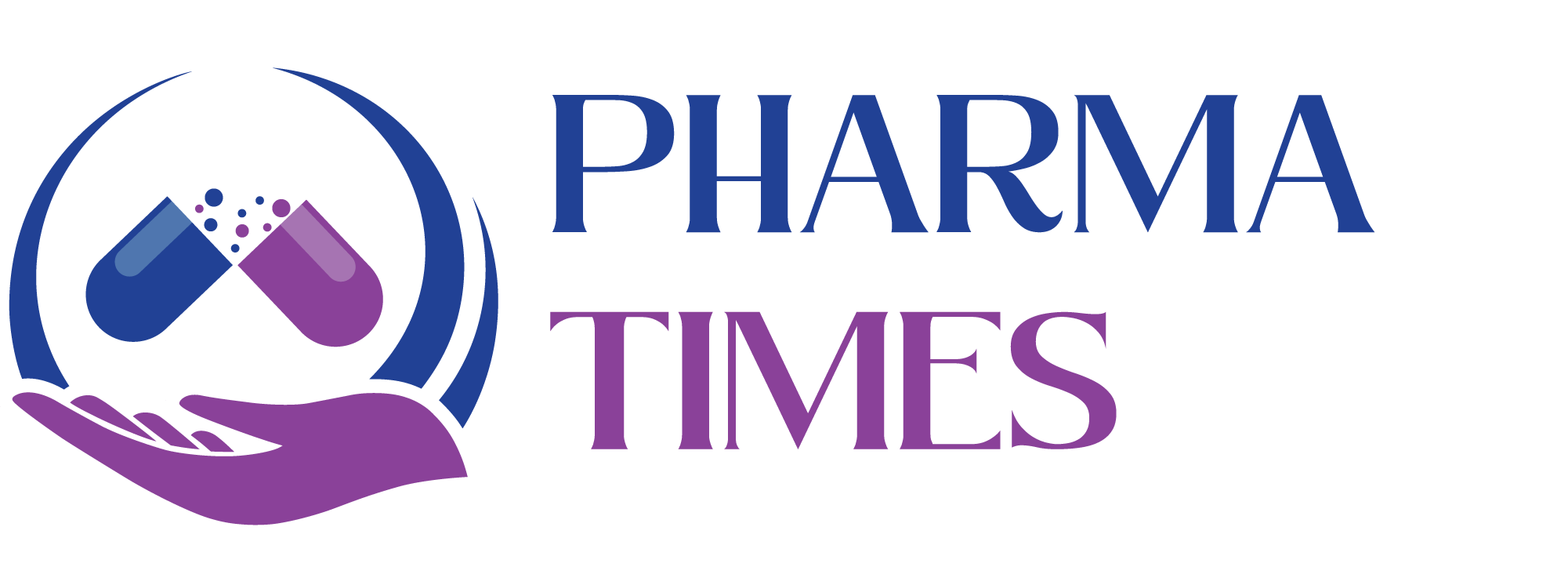EMA vs FDA Expectations on Process Validation

📌 EMA vs FDA Expectations on Process Validation
Definition:
Process Validation (PV) is the collection and evaluation of data, from process design to commercial production, to establish scientific evidence that a process is capable of consistently delivering quality products.
Both the FDA (US) and EMA (Europe) emphasize risk-based, science-driven validation, but there are key differences in approach and terminology.
🔹 FDA Expectations (US) – Lifecycle Approach
Outlined in FDA Guidance for Industry: Process Validation (2011).
-
Lifecycle model with 3 stages:
-
Stage 1 – Process Design
-
Develop understanding of the process and define CPPs (Critical Process Parameters) & CQAs (Critical Quality Attributes).
-
-
Stage 2 – Process Qualification
-
Demonstrate that the process and equipment perform as intended.
-
Includes facility/equipment qualification and PPQ (Process Performance Qualification) runs.
-
-
Stage 3 – Continued Process Verification (CPV)
-
Ongoing monitoring and control during commercial manufacturing.
-
Requires trending, statistical tools, and real-time monitoring.
-
-
✅ FDA focuses heavily on ongoing verification and statistical data analysis to ensure continuous control.
🔹 EMA Expectations (EU) – Traditional vs Continuous
Outlined in EU GMP Annex 15 (2015) and EMA Guideline on Process Validation (2014).
-
Recognizes two main approaches:
-
Traditional Process Validation
-
Usually 3 consecutive successful batches manufactured under routine conditions before marketing.
-
More static and less focused on lifecycle than FDA.
-
-
Continuous Process Verification (CPV)
-
Alternative approach aligned with FDA’s lifecycle model.
-
Data collection and analysis continue throughout the product lifecycle.
-
Emphasis on real-time release testing (RTRT) and PAT (Process Analytical Technology) where applicable.
-
-
✅ EMA allows either traditional or continuous validation depending on product risk and regulatory strategy.
🔹 Key Differences – FDA vs EMA
| Aspect | FDA (2011 Guidance) | EMA (2014/2015 Guidelines) |
|---|---|---|
| Approach | Mandatory Lifecycle Approach (3 stages). | Accepts Traditional (3 batches) OR Continuous Verification. |
| Terminology | Stage 1: Process Design, Stage 2: Process Qualification, Stage 3: Continued Process Verification. | Traditional PV, Continuous Process Verification (CPV). |
| Ongoing Monitoring | Strong requirement for Stage 3 CPV (mandatory). | CPV encouraged but not mandatory (unless chosen as strategy). |
| Batches for Validation | No fixed number; depends on risk assessment and statistical justification. | Typically 3 batches for traditional validation. |
| Emphasis | Lifecycle, science- and risk-based, statistical trending. | Flexibility: either traditional 3-batch or lifecycle CPV approach. |
| Regulatory Trend | Pushes for real-time monitoring and continual improvement. | Moving towards CPV but still accepts traditional validation. |
🔹 GMP Compliance Considerations
-
Both agencies require robust scientific justification and documented evidence.
-
FDA is stricter on continued verification and expects statistical trending.
-
EMA is more flexible, but regulators prefer companies adopting modern lifecycle concepts.
-
For global companies: usually follow FDA lifecycle model to satisfy both FDA & EMA.
🎓 Discover one of the best Complete Pharmaceutical Quality Assurance Course available —click below to explore the course that’s shaping future in QA Course skills.

